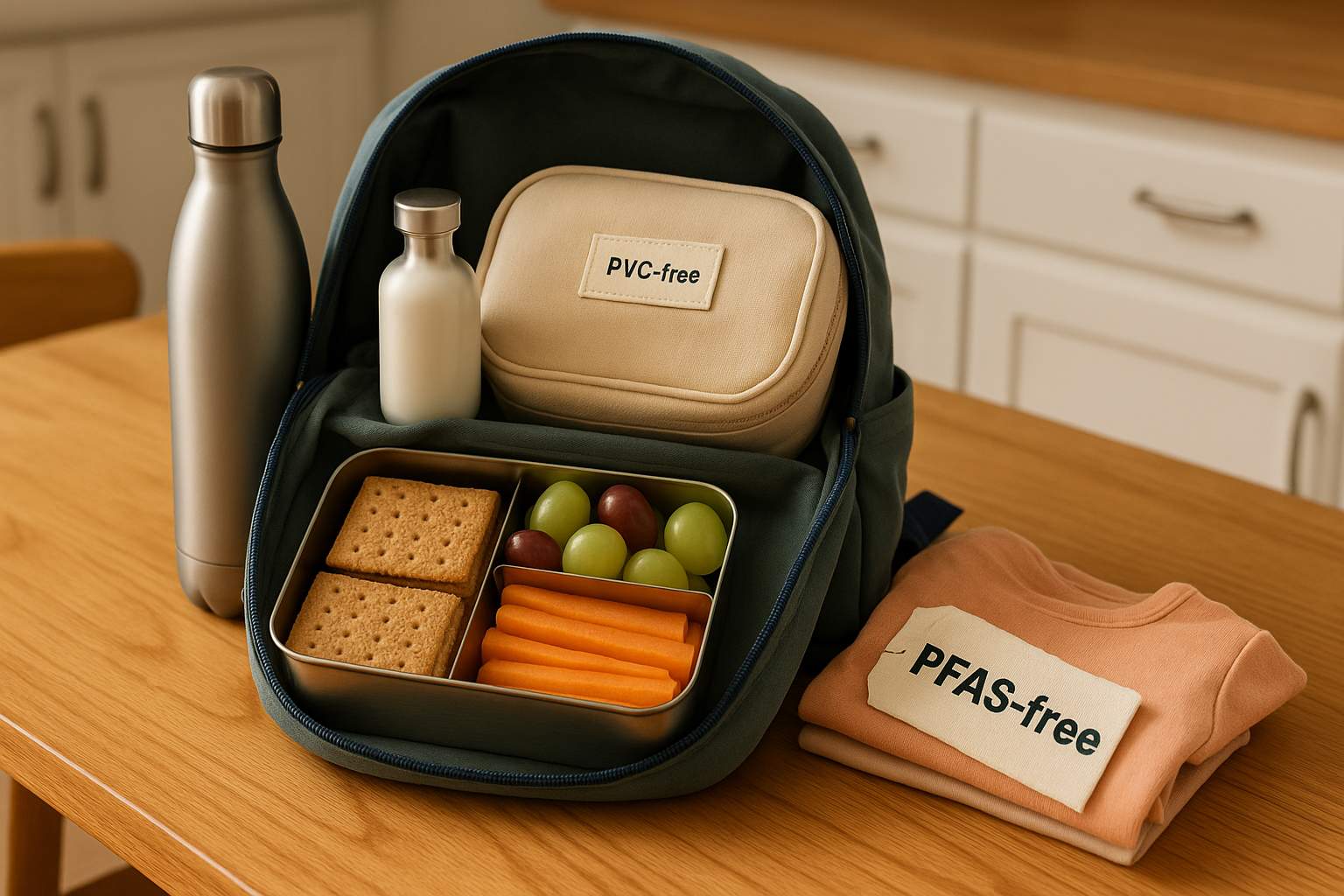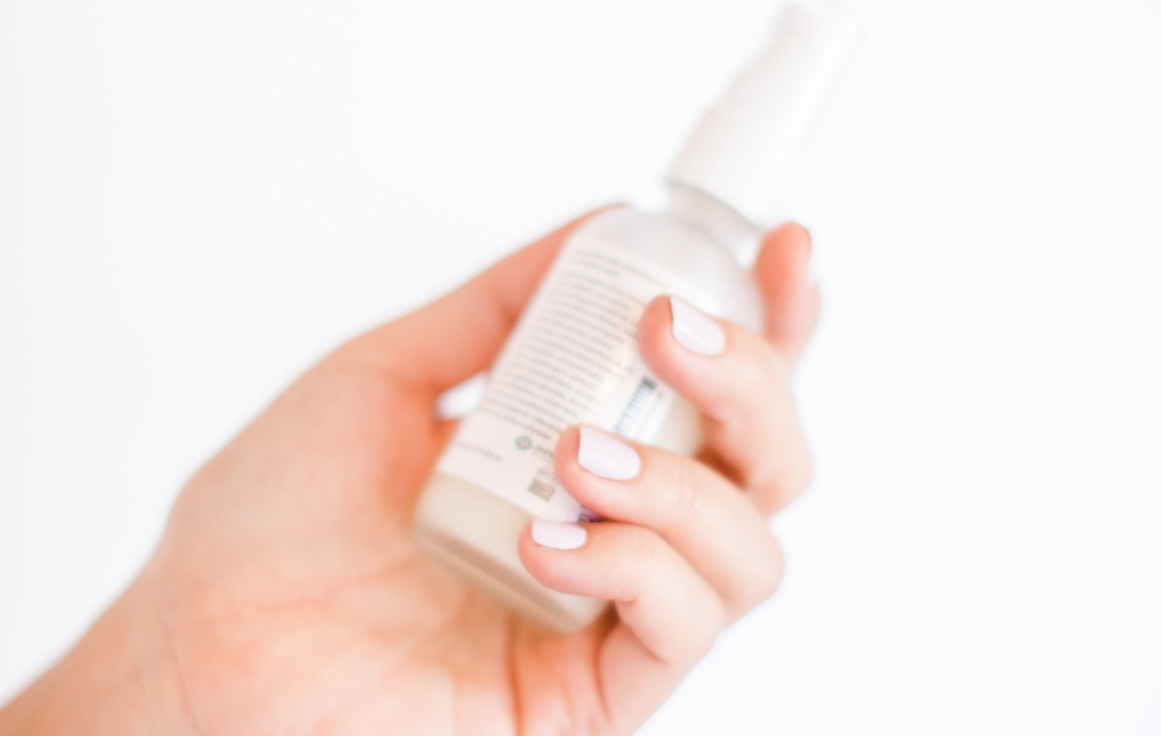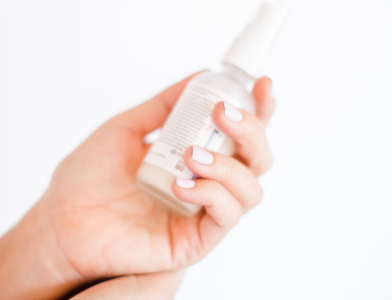Back-to-school shopping is exciting, but some everyday items in your child’s backpack can secretly disrupt hormones and affect their health. As a toxicologist, and a mom, I’ve seen firsthand how common school gear contributes to daily toxin exposure. The good news: small, simple swaps can make a huge difference in keeping your child safe, and you don’t need to overhaul your entire routine or budget.
Why School Supplies May Not Be as Safe as You Think
Many parents assume that if something is sold for children, it must be safe. Unfortunately, some of the most common back-to-school items are made with materials linked to serious health risks.
- Lunchboxes and backpacks: Vinyl coatings and wipeable surfaces often contain phthalates, chemicals used to soften plastics that are known endocrine disruptors.
- Reusable water bottles: Plastics like polycarbonate can leach BPA and microplastics, especially when exposed to heat or friction.
- Waterproof or stain-resistant clothing: Fabrics treated with PFAS (“forever chemicals”) are linked to hormone imbalance and other health problems.
Daily contact may seem minor, but children absorb more chemicals pound-for-pound than adults. Even small doses, repeated day after day, add up, especially during sensitive development stages.
The Three Biggest Hidden Risks in School Gear
- Lunchboxes and Backpacks with Vinyl or PVC Coatings
Phthalates are used in these items to offer durability and flexibility, but they can disrupt hormone function, brain development, and more. Kids handle their bags constantly, and each squeeze and toss slowly releases more chemicals. - Plastic Water Bottles
Even “eco-friendly” reusable bottles can leach BPA or microplastics. Hot days or rough handling make this even worse. The result: every sip carries unwanted chemical exposure often undetectable by taste or smell. - Stain-Resistant or Waterproof Uniforms
PFAS chemicals create that easy-clean effect but linger in the body for years. These substances are found in uniforms, jackets, and even rain gear and are associated with hormone disruption and increased health risks.
Simple, Affordable Swaps for Safer School Days
- Choose natural fabrics and food-safe materials
Pick backpacks and lunchboxes labeled “PVC-free” or made from cotton or canvas, with food-safe liners. For food storage, stainless steel bento boxes ensure zero plastic contact. - Look for all-metal water bottles
Stainless steel bottles with easy-clean parts and no plastic or silicone components that touch water are best. Avoid bottles with plastic straws or lids that trap moisture and encourage mold. - Skip the stain-resistant and waterproof labels
Opt for untreated cotton, wool, hemp, or linen clothing. Organic fabrics are a plus, but uncoated natural fibers are a great, budget-friendly alternative.
Low Tox Back to School
Links provided on this page are affiliate links, which means if you click on it and make a purchase I may earn commission. The commission comes at no cost to you and allows me to continue my research. Note- I only recommend products that I personally use and/or trust. I will always disclose whether a link is an affiliate link, and never recommend products solely for the purpose of commission.
How to Make Changes Without Overwhelm
It’s tempting to try to eliminate every risk at once, but that’s stressful and unnecessary. Start with one area, like lunch gear, then move to bottles and clothing. With each swap, your child’s exposure drops, and the benefits add up quickly.
Be alert for greenwashing: ignore vague “eco-friendly” or “BPA-free” labels without specifics. Instead, look for brands and products with clear, tested safety standards and materials.
Takeaway: One Change at a Time Makes All the Difference
Every day you wait means ongoing exposure during your child’s most vulnerable years. Just one smart swap can bring peace of mind right away. If you’re looking for the next area to tackle, don’t forget your kitchen; microwave habits can contribute even more to daily toxin load. Watch my next video to learn about microwave mistakes and how to make your meals safer, no stress, no sacrifice.
References
- Extraction, quantification and health risk assessment of bisphenol A from various kinds of packaged milk and baby bottles https://pmc.ncbi.nlm.nih.gov/articles/PMC11979397/
- Bisphenol-A Leaching from Polycarbonate 5-Gallon Water Bottles in the UAE: A Comprehensive Study https://pmc.ncbi.nlm.nih.gov/articles/PMC11396560/
- Risky Business? Manufacturer and Retailer Action to Remove Per- and Polyfluorinated Chemicals From Consumer Products https://pmc.ncbi.nlm.nih.gov/articles/PMC8193156/
- Per- and Polyfluoroalkyl Substances in North American School Uniforms https://pmc.ncbi.nlm.nih.gov/articles/PMC9535897/
- Endocrine Disruptor Chemicals and Children’s Health https://pmc.ncbi.nlm.nih.gov/articles/PMC9916521/



